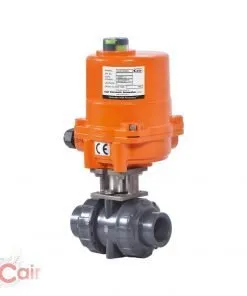The Benefits of Motorized Ball Valves in Various Industries

Why Use Motorized Ball Valves? Motorized ball valves are widely used in various industries and applications because of their superior performance and ease of use. These valves are powered by an electric motor, which provides precise control over the flow of liquids or gasses through the valve. One of the main advantages of using motorized ball valves is their fast response time, which allows for quick adjustments to flow rates and pressure levels. Additionally, motorized ball valves require minimal maintenance and are highly reliable, making them a cost-effective solution for many applications. Additionally, they can handle high temperatures and corrosive environments, making them suitable for industries such as oil and gas, chemical processing, and water treatment. Another benefit of using motorized ball valves is their compatibility with various control systems, such as PLCs, SCADA, and DCS, allowing seamless integration into existing automation systems. This, in turn, can improve pr...